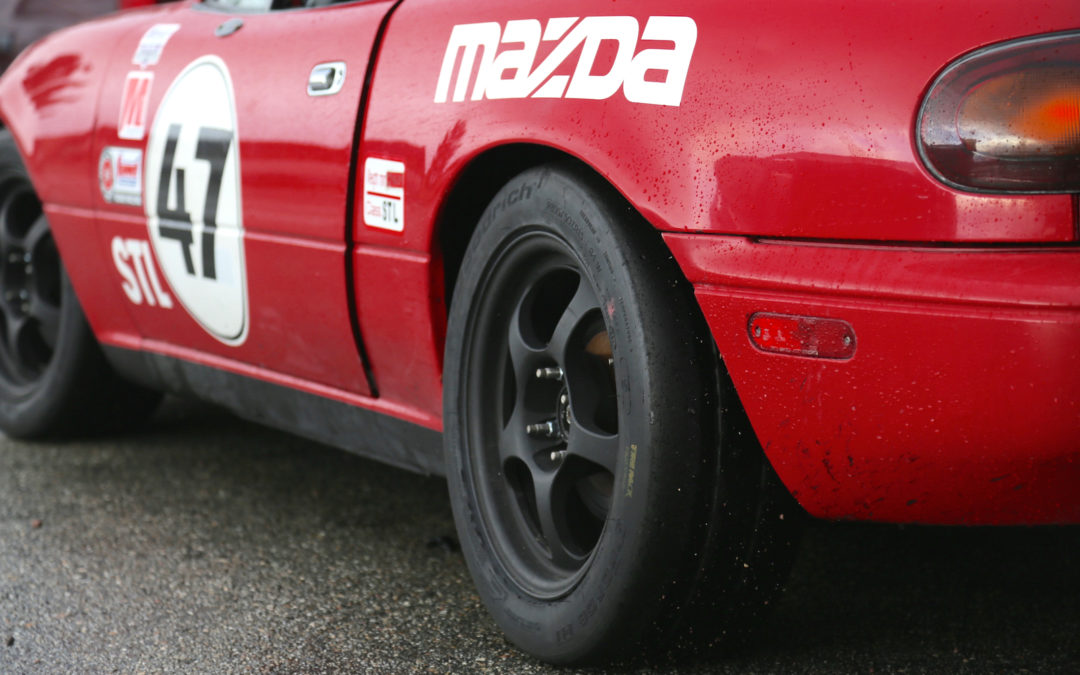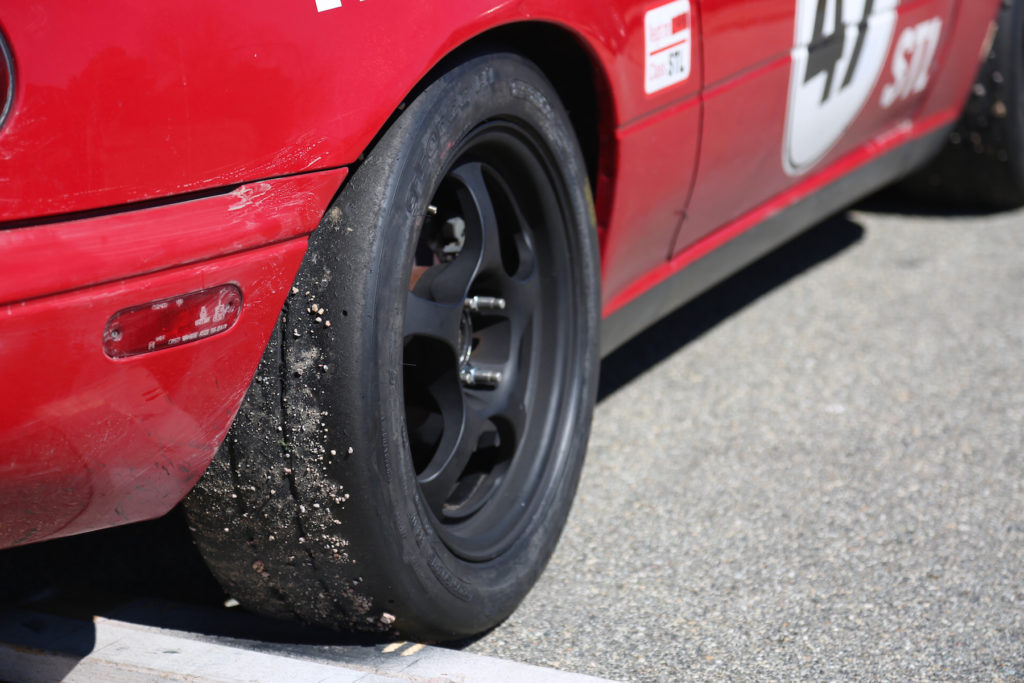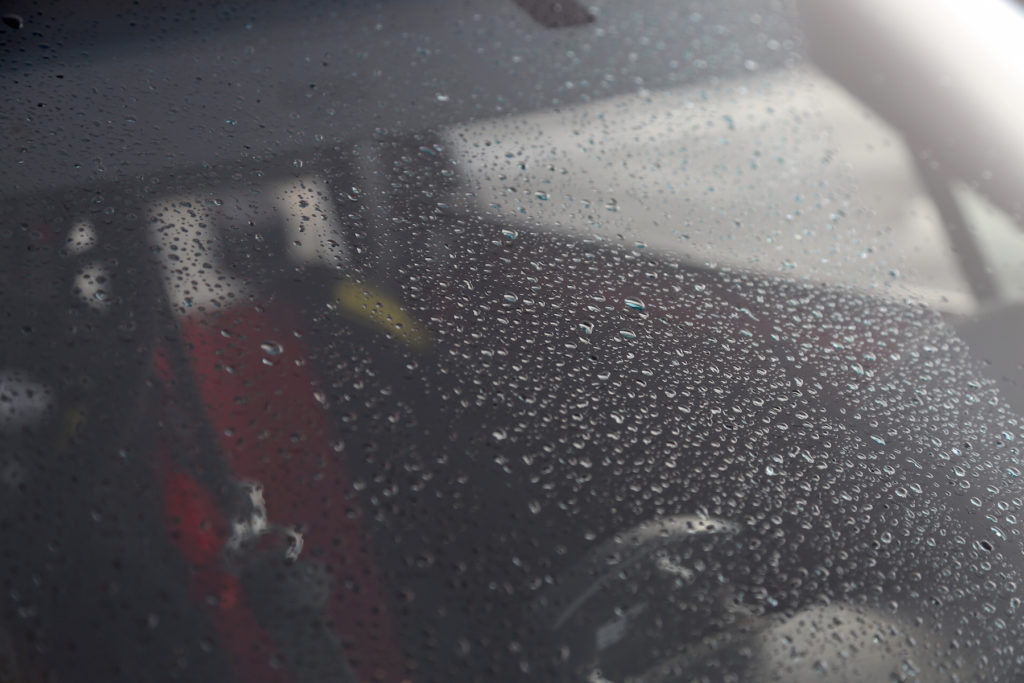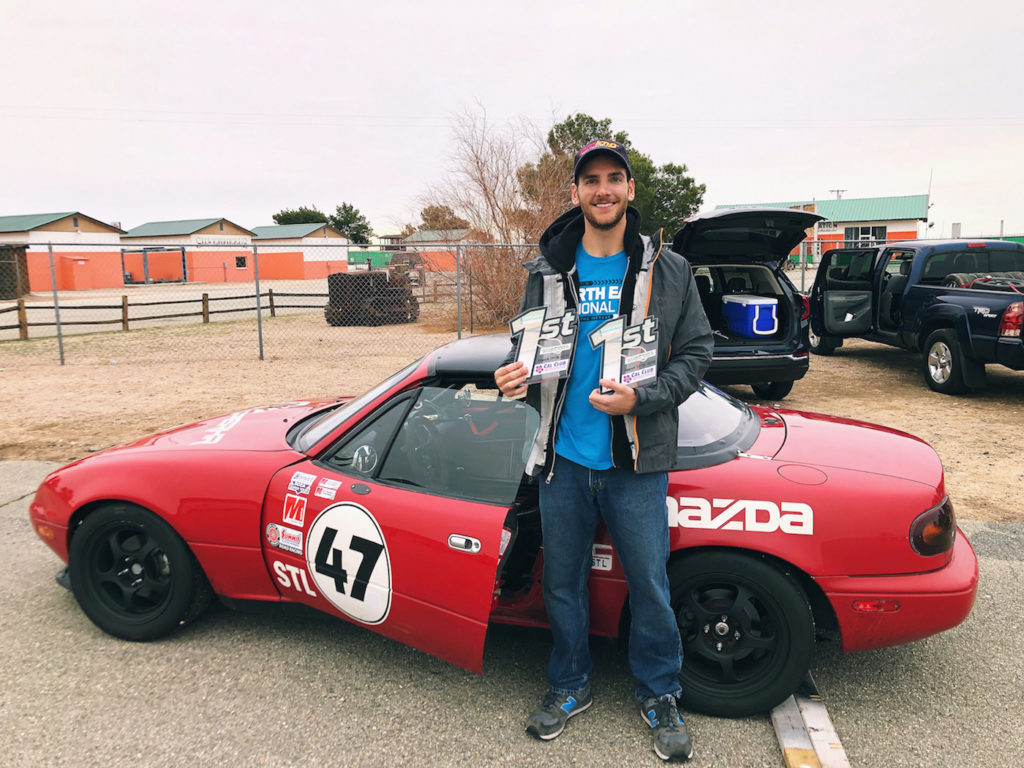Of all the lessons you will learn at the racetrack, only one can be grasped after the very first corner: tires change everything.
Whether you’re driving a 700-horsepower, rear-drive muscle car or an 80-hp, front-drive hatchback, you can’t hope to extract the best from your vehicle without a proper set of tires.
I should be ashamed to have forgotten such an essential principle for my own race car — after all, I’ve experienced the differences a good street tire can make through numerous comparison tests. Alas, my first race was spent culling the final bit of grip from a set of old racing slicks. And when I say final bit of grip, I mean it. After the conclusion of my race, I peeled off the tires to find several flat spots on the front pair.
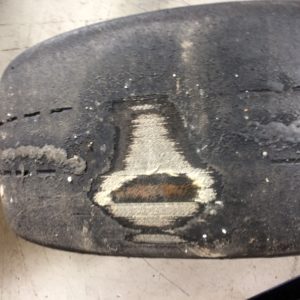
Flat spots are to be expected, and once they’ve formed, the car will find the flat spots again and again. Still, when you remove a tire to discover it’s worn to the steel cords, that’s too close a call.
Having narrowly avoided disaster, I was ready to walk the right path. My next race would be at Willow Springs Raceway, a notoriously fast track that allows high-output vehicles to capitalize on their grunt. Low horsepower cars, meanwhile, only compensate for power with momentum. In the case of my 110-hp Mazda Miata, grip would be my only hope.
To find the right shoes for my car, and to learn a thing or two about race rubber, I gave the folks at Tire Rack a call. Woody Rogers, a product information specialist, refined his vast knowledge on the subject of tires into some key takeaways.
First, we discussed rubber compounds. In basic terms, the softer the tire compound, the quicker it comes up to temperature and the more grip it has. The vast majority of racing tires utilize soft compounds. The downside to soft compound tires is their durability (or lack thereof).
Woody’s next tidbit pertained to thread pattern and tire grades. In fair weather, the best tires for the track are either R-Compound or slicks. An R-Comp tire features a shallow tread pattern and is DOT approved for street use. A slick lacks any tread pattern, is not approved for street use, and wears much faster than an R-Comp. A set of R-Comps will retain peak traction for about 16-18 hours of hard use, while a slick will begin yielding grip after just two hours. In addition to these options, Woody prescribed a set or dedicated “rain tires” — ones with deep tread grooves — as the ideal instrument for wet weather.
The final tip in my race tire crash course was about heat cycling. News to some (myself included) is that two sets of tires, created by the exact same methods, can perform in dramatically different ways based on their post-production procedure. If you pull one set off the assemble line, put it on a car, and start racing, you’ll experience a rapid peak in performance, followed by inconsistency over the life of the tire. However, if you bring a tire up to temperature (accomplished via approximately three laps of a circuit or a few minutes on Tire Rack’s heat cycling machine), then store it for 24 hours or more (but not longer than three weeks), it will perform consistently from the first day.
Following Woody’s briefing, I sought his advice for my next set of tires. Based on Southern California’s dry climate and my intended use at Willow Springs, we concluded a set of BFGoodrich R1-S would serve me well.
A week before the SCCA Majors competition, my fresh tires arrived heat-cycled and ready to roll. The weather forecast promised clear skies and cool temperatures for both Saturday and Sunday’s races — perfect conditions to evaluate the performance differences between new and old rubber.
However, Saturday’s weather started favorably, then it all went awry. Dark clouds appeared on the horizon an hour before my race. By the time I was scheduled to grid, raindrops were spattering the car windows. Without a set of proper rain tires (I had erringly put off Woody’s recommendation for a later date), my crew chief and I had a decision to make: stick with the new slicks or swap in my R-comps.
Temperature would be the determining factor. Without a glimmer of sunlight, the temperature had dropped to 40 degrees. The treaded R-comps would be more effective to eject water, but it would take too long for them to come up to temperature. Provided I found the track’s rain line, the slicks would be more effective.
Starting mid-pack, I saw the green flag and darted up to fourth position after the first corner. First place — a high-output car in a different class — seemed to leap ahead. Three corners later, however, he was picking his car out of the dirt to rejoin the race. All around me, cars were squirming, and though the rain was coming down thick now, I felt confident.
The slicks clung to the available traction found high on banked corners. Smooth inputs of the wheel and careful feeding of the throttle kept me on track. Braking was the biggest challenge; twice the tires locked, pushing the car’s tail out, and twice I wrestled the car straight. An increase in braking distances eliminated lockup.
Second place struggled to put the power down, and a particularly wide turn gave me room to pass on the inside. Five laps from the finish, the rain started the let up and visibility improved. I started pushing a bit harder in the corners and slowly gained on the first place car, an Acura TLX on treaded R-comps. By the final lap, I was just over a second behind. Not willing to do anything dumb to make a pass, I clung to second overall.
Competing with slicks in wet weather may not have been ideal, but the tires’ performance in adverse conditions was truly remarkable.
By the next morning, the high desert’s capricious weather was 65 degrees and sunny. I wasn’t complaining because a dry track would show the true limits of my new racing slicks.
Qualifying was a revelation. With every new lap, I broke a bit later before corners and pressed a little harder through them. Traction was my best friend as I set quicker and quicker lap times. Despite grouping with cars that made four times the output, my Miata qualified eighth of 15.
The race picked up where qualifying left off. It took until the eighteenth lap for the tires to break traction. The result of my incessant prodding for their limits during a race-long battle with a Porsche 944, the surrender of traction came mid-corner on a long sweeper. A smooth, manageable drift carried me through the corner fractionally slower than in prior laps. I had given up the lead to the 944 for now, but it was worth it to find the grip threshold.
In the end, my war with the Porsche came down to a half car-length victory. His power very nearly caught me on Willow’s long front straightaway, but my Miata’s handling prowess and superior traction triumphed.
If you aspire to race, know that tires will be an expensive consumable, but a deciding factor in your success at any level of competition. Should you forget, your rivals will be sure to remind you at every turn of the track.

